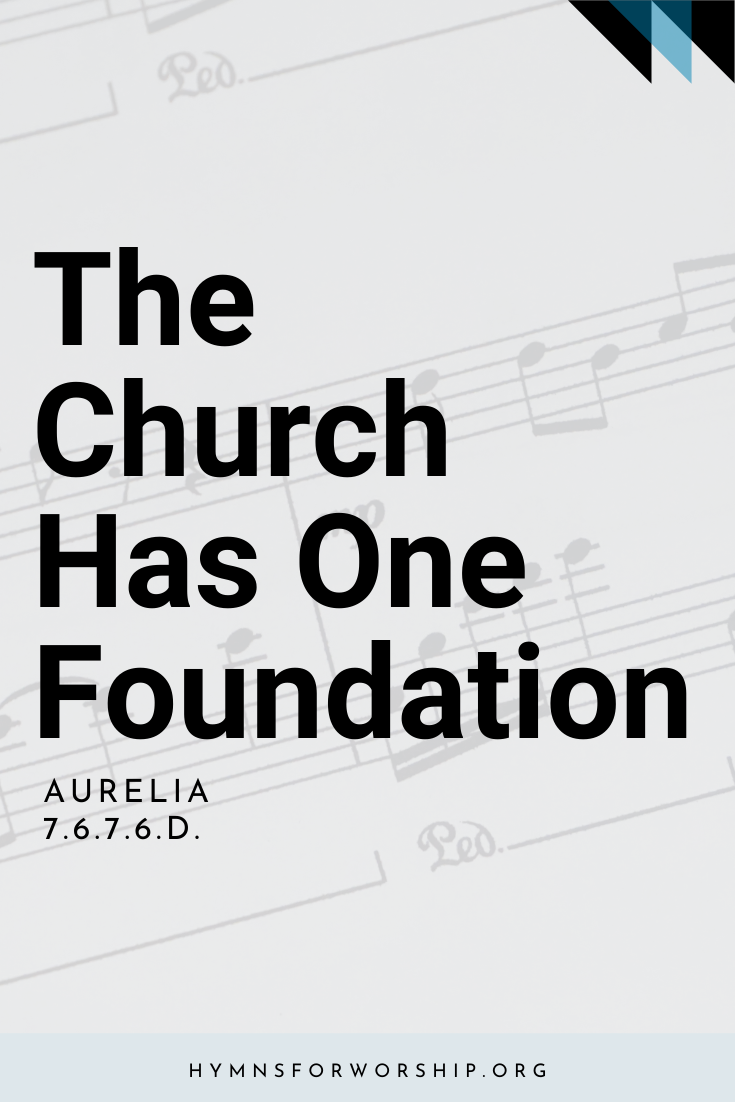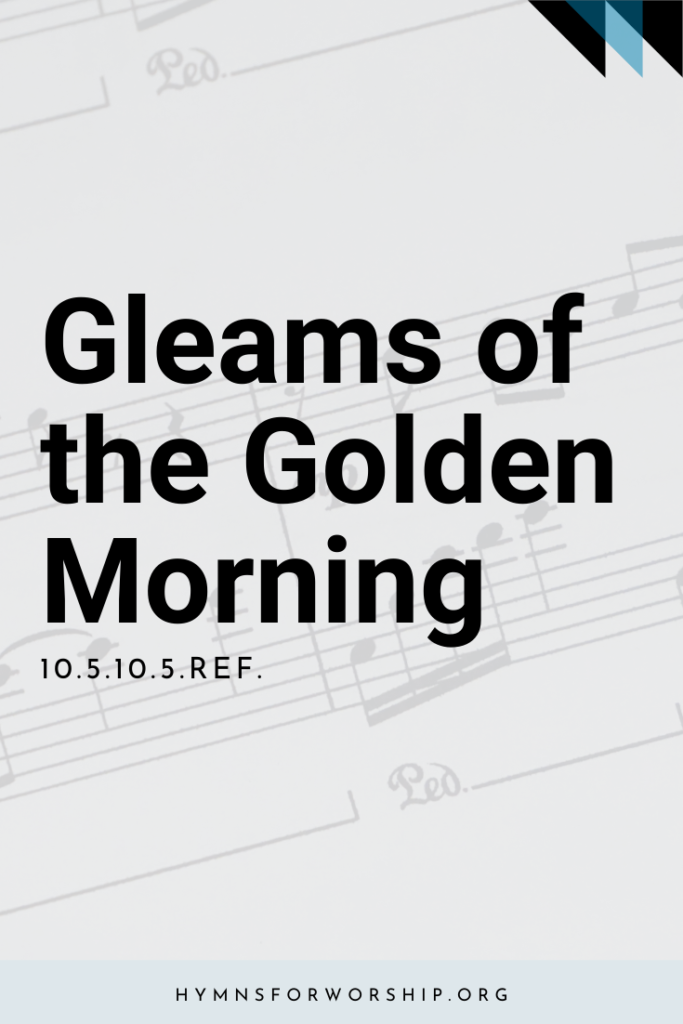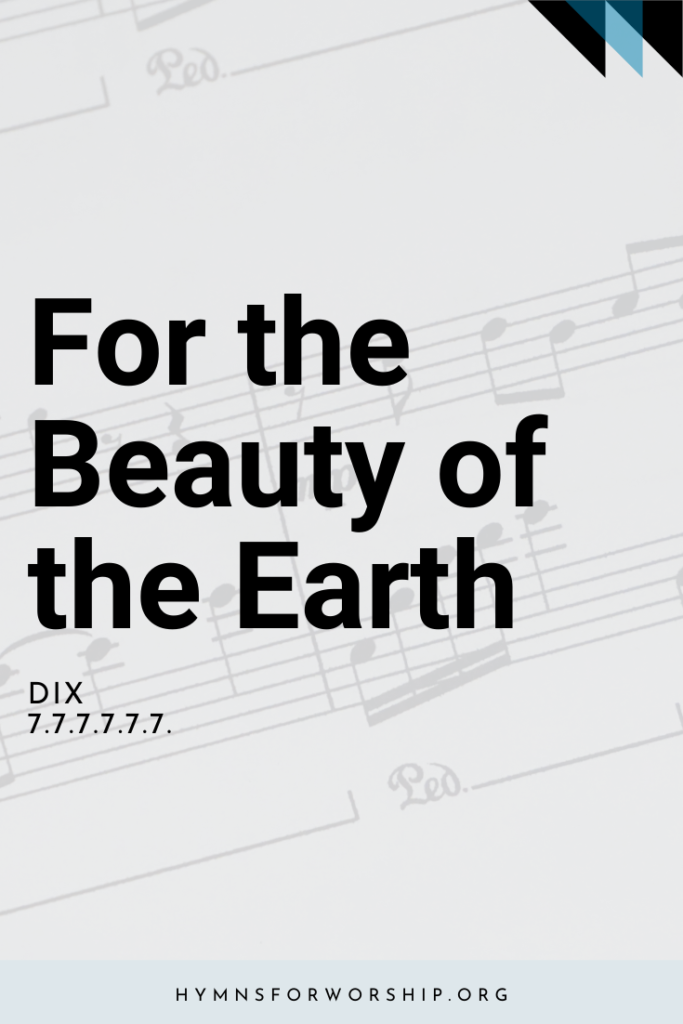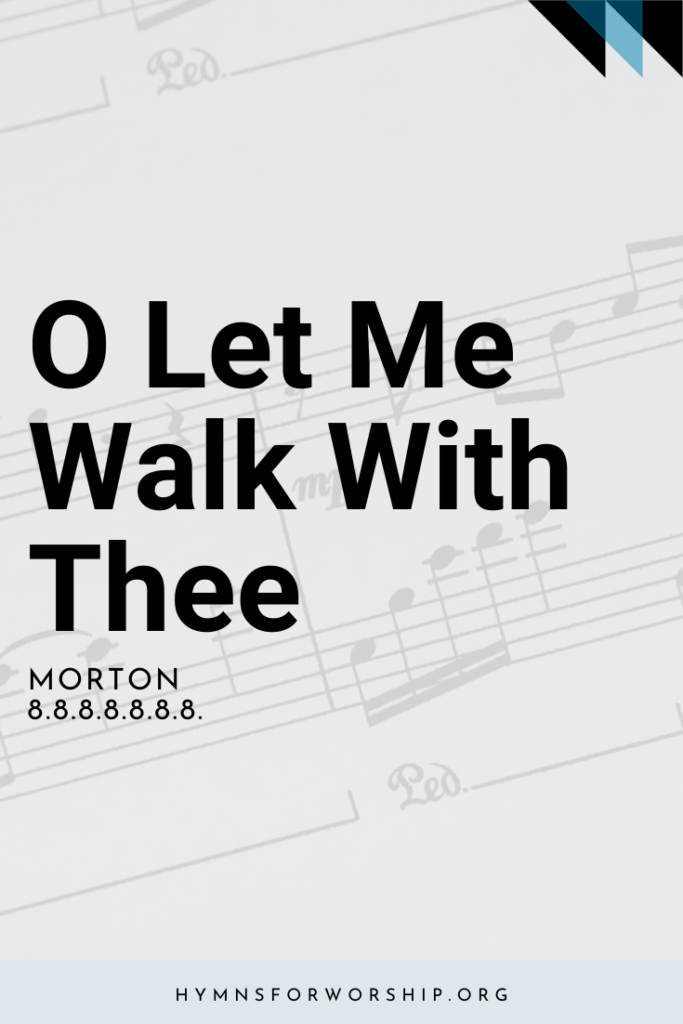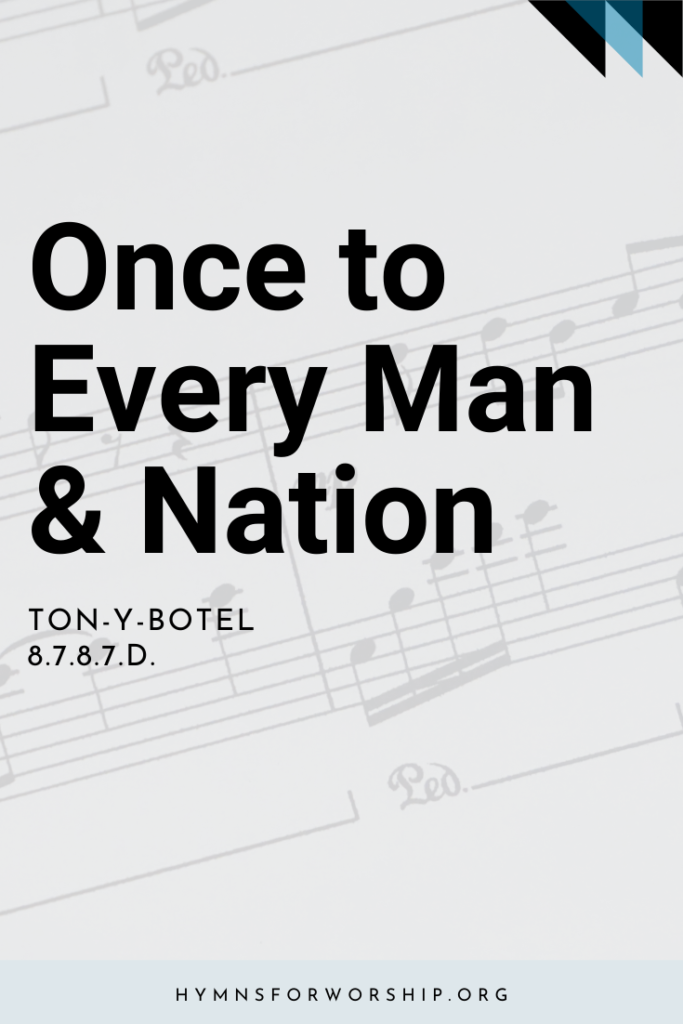CHRISTIAN CHURCH >> COMMUNITY IN CHRIST
SDAH 348
The church’s one foundation
is Jesus Christ her Lord;
she is his new creation
by water and the Word.
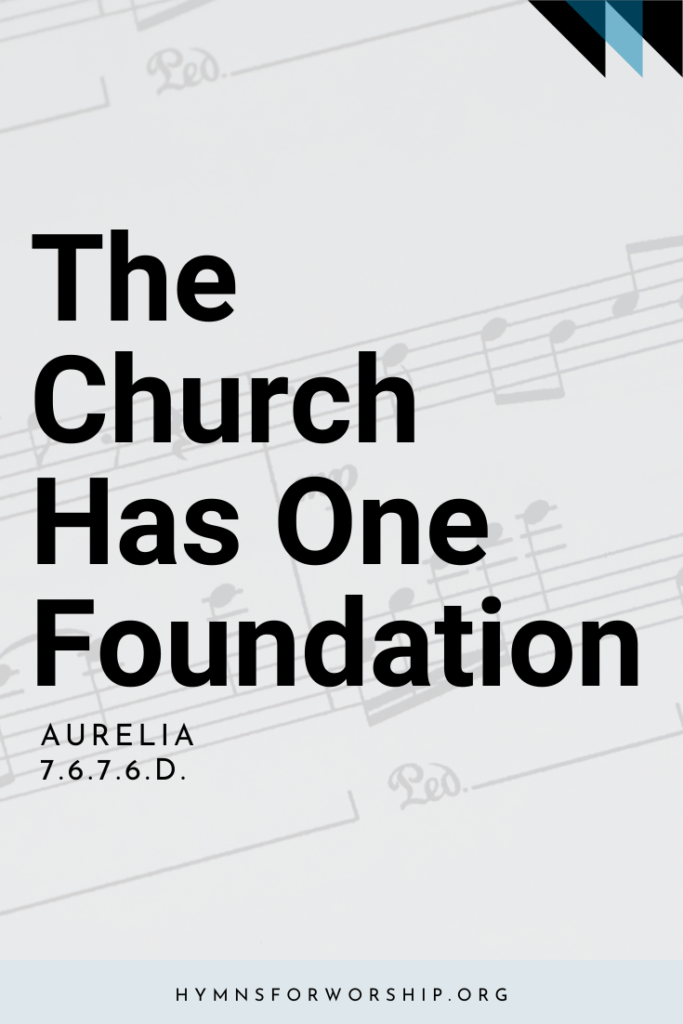

Text
1
The church’s one foundation
is Jesus Christ her Lord;
she is his new creation
by water and the Word.
From heaven he came and sought her
to be his holy bride;
with his own blood he bought her,
and for her life he died.
2
Elect from every nation,
yet one o’er all the earth;
her charter of salvation,
one Lord, one faith, one birth;
one holy name she blesses,
partakes one holy food,
and to one hope she presses,
with every grace endued.
3
Though with a scornful wonder
we see her sore oppressed,
by schisms rent asunder,
by heresies distressed,
yet saints their watch are keeping;
their cry goes up, “How long?”
And soon the night of weeping
shall be the morn of song.
4
‘Mid toil and tribulation,
and tumult of her war,
she waits the consummation
of peace forevermore;
till, with the vision glorious,
her longing eyes are blest,
and the great church victorious
shall be the church at rest.

Hymn Info
Biblical Reference
(a) 1 Cor 3:11; Isa 54:5; 1 Cor 6:20 (b) Eph 4:5 (c) Matt 16:18; Rev 6:10; Ps 30:5
Author
Samuel J. Stone (1839-1900)
Year Published
1866
Hymn Tune
AURELIA
Metrical Number
7.6.7.6.D.
Composer
Samuel S. Wesley (1810-1876)
Year Composed
1864
Hymn Score
Piano Accompaniment
Notes
Get to know the hymns a little deeper with the SDA Hymnal Companion. Use our song leader’s notes to engage your congregation in singing with understanding. Even better, involve kids in learning this hymn with our homeschooling materials.
Christ is waiting with longing desire for the manifestation of Himself in His church. When the character of Christ shall be perfectly reproduced in His people, then He will come to claim them as His own. {LDE 39.2} (Lesson 4, 3rd Quarter 2022 -Thursday, Character and Community, 7/21/22
Bishop John William Colenso (1814-1883) of Natal, South Africa, wrote a book entitled The Pentateuch and the Book of Joshua, Critically Examined. In it he revealed his support for the “modern” disbelief in the historicity of these Old Testament accounts and also his liberal views of the Scriptures and some of the doctrines of the Anglican Church. His superior, Bishop Gray, of Cape Town, declared Colenso deposed from his bishopric because of his divisive opinions. Colenso appealed to the Privy Council and was reinstated as bishop in Natal; he continued to hold his “higher critical” views until his death. A furor was created in the church and bitter debate resulted.
In the town of Windsor, in Berkshire, England, a young curate, Samuel John Stone, was thrilled by Bishop Gray’s defense of the faith. He knew that the poorer and uneducated members of his congregation, although reciting the creed faithfully each week, did not fully understand its real meaning. He decided to strengthen the faith of his own parishioners by writing a hymns to explain the creed. These hymns—12 in all, one for each article of the Apostle’s Creed—were printed in his Lyra Fidelium, 1866. In the preface Stone states: “The testimony of Holy Scripture has also been adduced to authorize the doctrine and sentiment of almost every line, and to shew the oneness of the truth of the Bible and the belief of the Church.”
This hymn is based on article nine of the creed, which states: “I believe in . . . the holy catholic church, the communion of saints.” Reference to the Colenso controversy is seen in SDAH’s third stanza, lines three and four, which are even stronger in the original, namely:
By schisms rent asunder,
By heresies distrest,
There were originally seven stanzas, of which SDAH has 1, 2, 4, and 5. In 1885 the hymn was enlarged by the addition of three more stanzas, for processional use in Salisbury Cathedral; they appear in Stone’s Hymns, 1886, headed “Full Form.”
The hymn is truly an instructive one, as intended, and fulfilled the purpose of the author, who said in his preface that there were many prose expositions of the creed that were mainly for students and educated persons. He felt that a poetical form of the articles would be more effectual in keeping them in the memory and influencing the heart and life of those who sang.
Stone, born on April 25, 1839, at Whitmore, Staffordshire, graduated from Oxford University. He was ordained in 1862 and appointed to Windshor as curate. In 1870 he transferred to London as assistant to his father, and in 1874 succeeded him as vicar. From 1890 until his death on November 19, 1900, he ministered in central London, taking particular care of young people who commuted in to London each day to work. He made his church a haven for them so that they would not have to walk the streets until their places of work opened. He composed more than 50 hymns.

